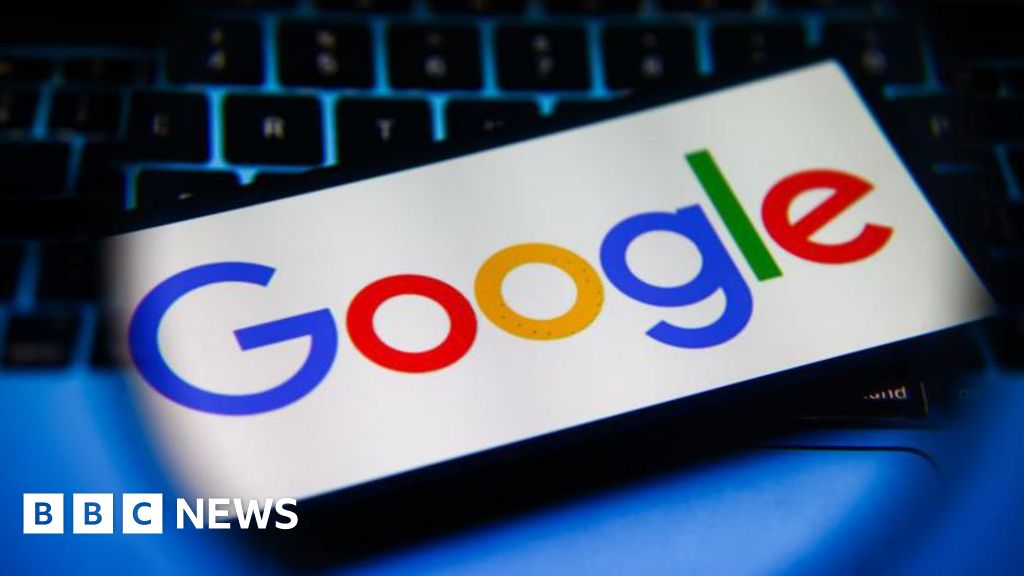Higher education is the most important industry in America. It’s the vaccine against the inequities of capitalism, the lubricant of upward economic mobility, and the midwife of gene therapies and search engines. College graduates lead longer, healthier, and more prosperous lives. University research provides the raw material for corporate innovation. Our institutions call to our shores the best and the brightest from around the world, many of whom stay to make America a stronger nation, and form connective tissue with their home countries.
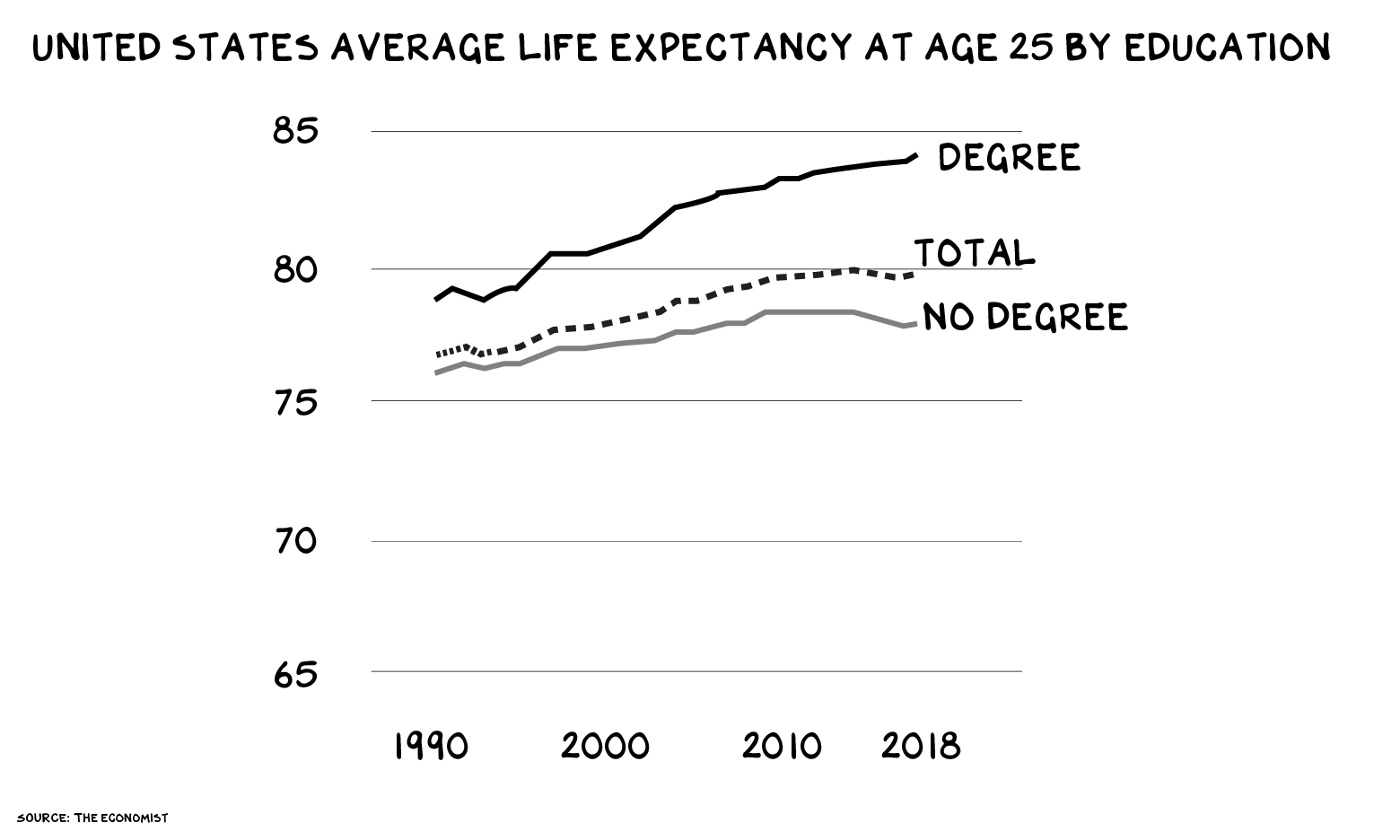
Higher ed presents a promise for America and the world. But every year, my industry falls further from that promise. The underpinnings of that view are simple and static: Higher ed has increased its prices by 1,400 percent since the late 1970s, but the product has not appreciably changed — the biggest cost driver is administrative bloat. And, rather than catalyzing economic mobility, U.S. higher ed is stifling it. At 38 of the top 100 colleges in America, including five of the Ivies, there are more students from the top 1 percent of income earning households than there are from the bottom 60 percent.
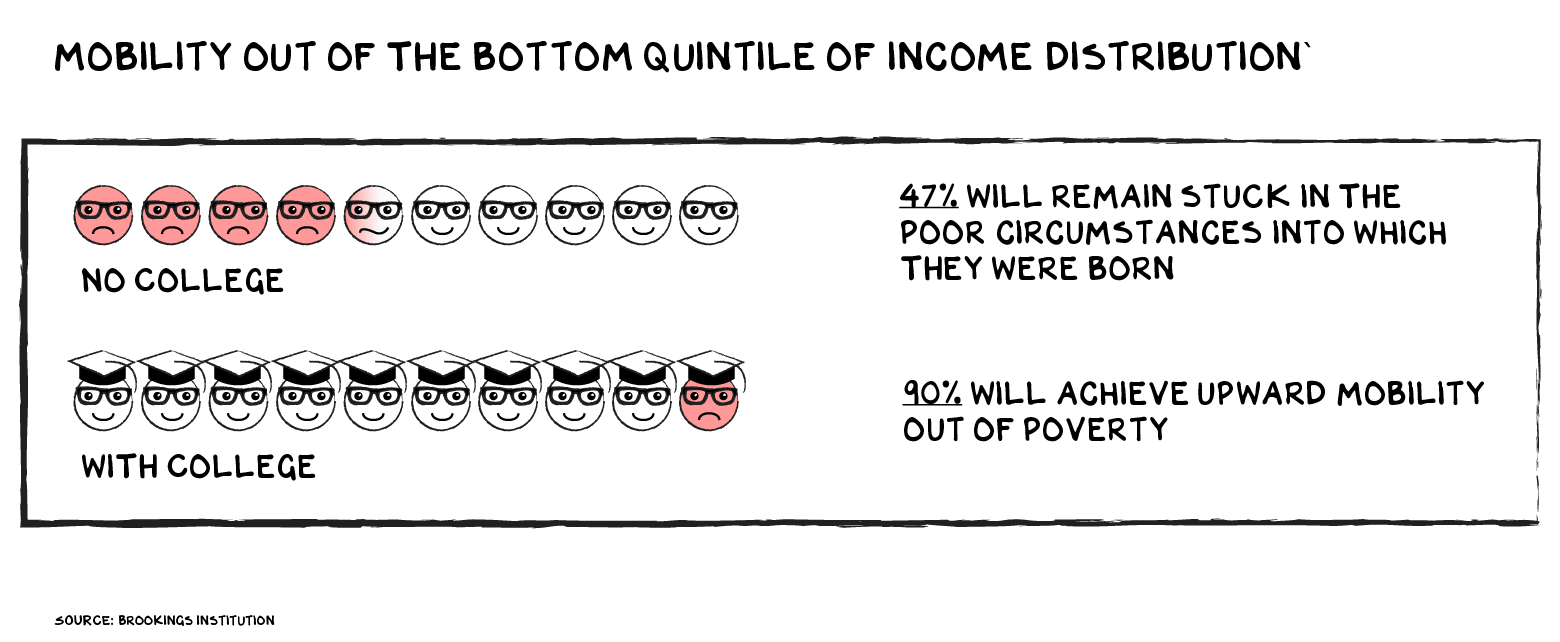
Yet, higher ed’s brand strength (nobody donates $20 million to name a building on Apple’s campus), cash reserves (among elite institutions), and stranglehold on the American psyche have insulated it from disruption for decades. The litmus test for success — and for determining your role in our species — is if (and which) college your daughter graduates from. Suzy might be a heroin addict, but if she’s at Dartmouth, all is forgiven.
Last year, we predicted the pandemic would be the fist of stone that finally meets higher ed’s glass jaw. Were we correct regarding the coming storm? Or were we alarmist, underestimating institutional strength (or rather, inertia)? The answer is … yes.
K-Shaped (College) Recovery
As we begin to emerge from Covid-19 (God’s ears), American colleges look like the rest of America. Specifically, the fifth installment of the Hunger Games franchise, wherein our society engages in the idolatry of economic winners, everyone else hopes to survive, and many meet a gruesome end.
The most selective schools received 17 percent more applications than last year, and the elite of the elite saw even greater increases: Yale, 33 percent; Harvard, 43 percent; MIT 66 percent. The rich are getting richer.
These schools (and the media) have emphasized that the increases in applications include record numbers from poor students and students of color — at UCLA, for example, overall applications rose 28 percent, but the school received 48 percent more applications from Black students. The result is that top schools are reporting their most diverse cohort of admitted students in history.
Two factors drove these increases: dropping the standardized test requirement, and the increased attention paid to racial and economic justice over the past year. Few people are in a position to make as immediate and tangible of an impact on the lives of promising young students from disadvantaged backgrounds as are elite college admissions officials. In 2021, they leveraged this power.
Widen the lens, however, and this trend starts to look less encouraging. Admission to a top school can be life changing, but in a country that graduates over 3.5 million people from high school every year, the 1,700-person freshman class at Harvard is immaterial. Over the past 30 years, the number of seats at Ivy League schools has increased only 14 percent, while the number of high school graduates has expanded by 44 percent. The Ivy League sits on a total endowment of $140B, and shares this wealth with just 17,000 freshmen each year.
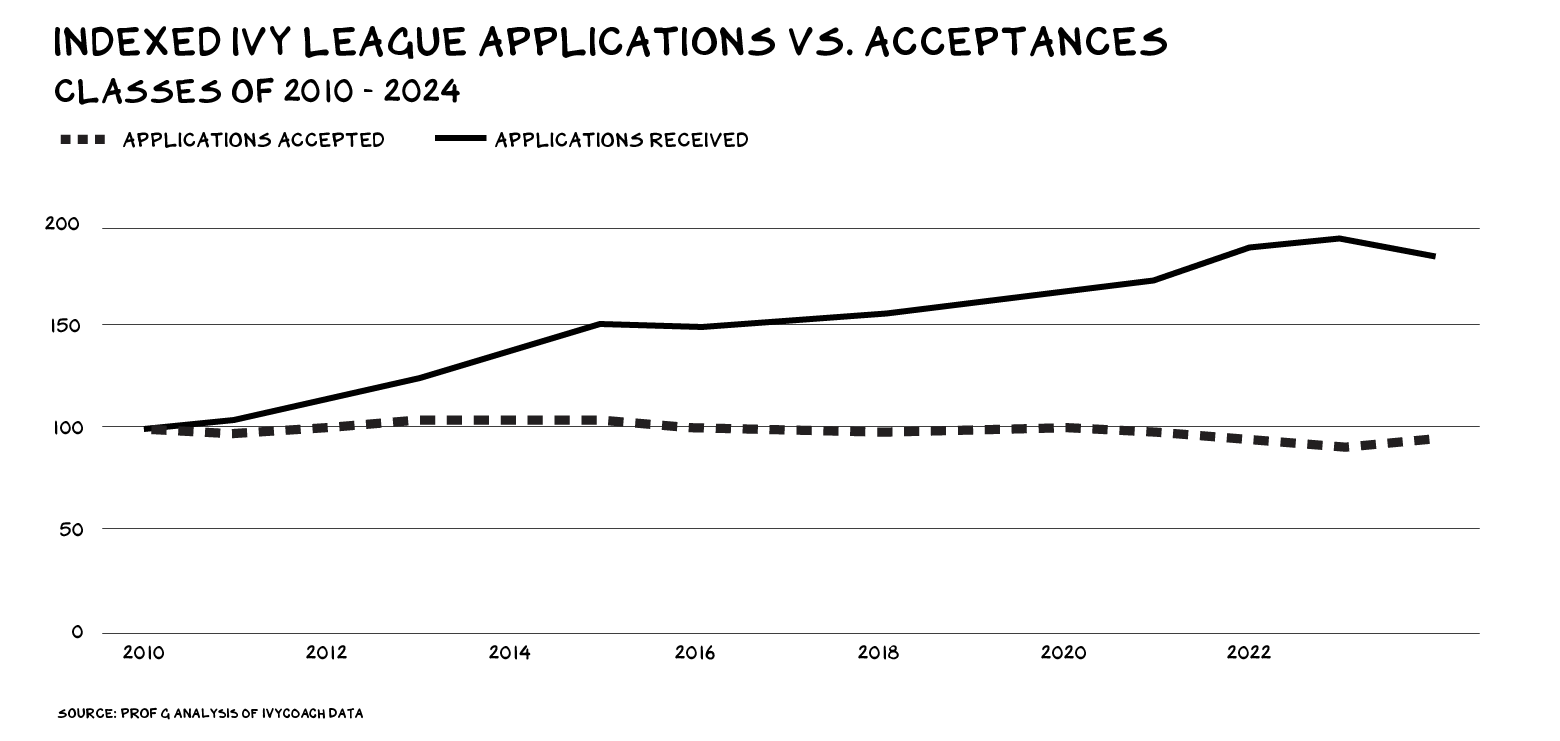
A year ago, I predicted that these schools would leverage their extraordinary brand strength and the forced adoption of distance learning technology to partner with big tech and radically expand their class sizes. “In 10 years,” I told New York magazine, “it’s feasible to think that MIT doesn’t welcome 1,000 freshmen to campus; it welcomes 10,000.”
I was wrong. The leadership and alumni of elite universities continue to register tremendous psychic reward from the Hermes-ification of their institutions, versus any remaining claim of public service. Expect another round of undue self-congratulation from these schools in the fall — but look closely, as the anticipated record-setting enrolled student numbers this year simply reflect the record number of deferred enrollments last year.
Zombie Schools Walking
Widen the lens a bit more, and the picture gets worse. While applications were up at elite schools, they were way down at second-tier schools. Applications for federal financial aid are also down 9 percent, which suggests that college ambition among poor and working class kids is declining. In a society where college degrees are the vaccine against inequality, this is disturbing news. Declining college attendance among those who would benefit most is a contamination of the vaccine supply.
The prediction that generated the most controversy we’ve inspired (with my shirt on) was when we wrote in April 2020: “We’ll see a culling among universities … we’re going to see dozens, maybe hundreds, of universities not reopen.” And we named names. In May, we predicted: “There will be a lot of zombie universities. Alumni will step in to help. They’ll cut costs to figure out how to stay alive, but they’ll effectively be the walking dead.” Within 72 hours I received my first, second, and third cease and desist letters from universities we said were likely to perish. The threats of legal action have tempered my actions and caused a number of sleepless nights. The last sentence is a lie.
So far, though, there has not been a rash of post-pandemic college closings. Some schools have closed: MacMurray, Mills, Concordia, and Holy Family, all small schools with long histories and proud traditions — but also financial weaknesses that left them exposed to the pandemic’s impact.
Many more schools have similar weaknesses. One study found that one-third of private colleges are at “high risk” of financial failure. (The study was never formally released, however, thanks to cease and desist letters from many of those schools … #feelyou.) Covid-related costs, coupled with the decline in applications, portend more problems. Many of these schools will graduate more Hunger Games contestants, but the odds are not in their favor.
Bankruptcy, as Hemmingway observed, happens two ways: “Gradually, then suddenly.”
Wildlings
While the lords of American higher ed fortify their walls, and the erasures of second-tier castles multiply, there is a gathering force about to ignite a fire the North has never seen. Last year, I believed the change would occur on the supply side, with expanded enrollments at the top schools. It now looks as if the demand side will change the game: Employers are rethinking certification.
From Elon to Apple, some of the most admired employers are dropping the college degree requirement from more and more jobs. Over 130 companies have committed to accepting Google-certified courses as equivalent to credits earned at traditional four-year colleges. More than 250,000 people took Google’s IT certificate program in its first two years — and 57 percent of them did not have a college degree.
Similarly, Amazon announced a partnership with Lambda School, launching a nine-month, full-time training program in software engineering, designed to put graduates in jobs with an average base salary of $80,000. Students are not obligated to pay anything upfront; instead, they pay based on their salary after graduation. Again: no college degree required.
Here in Florida, Governor DeSantis has proposed using $75 million in federal Covid relief funds to invest in vocational training programs. There’s a scarcity of skilled tradespeople, and those are good paying, secure jobs — it will be a long time before robots replace electricians and plumbers.
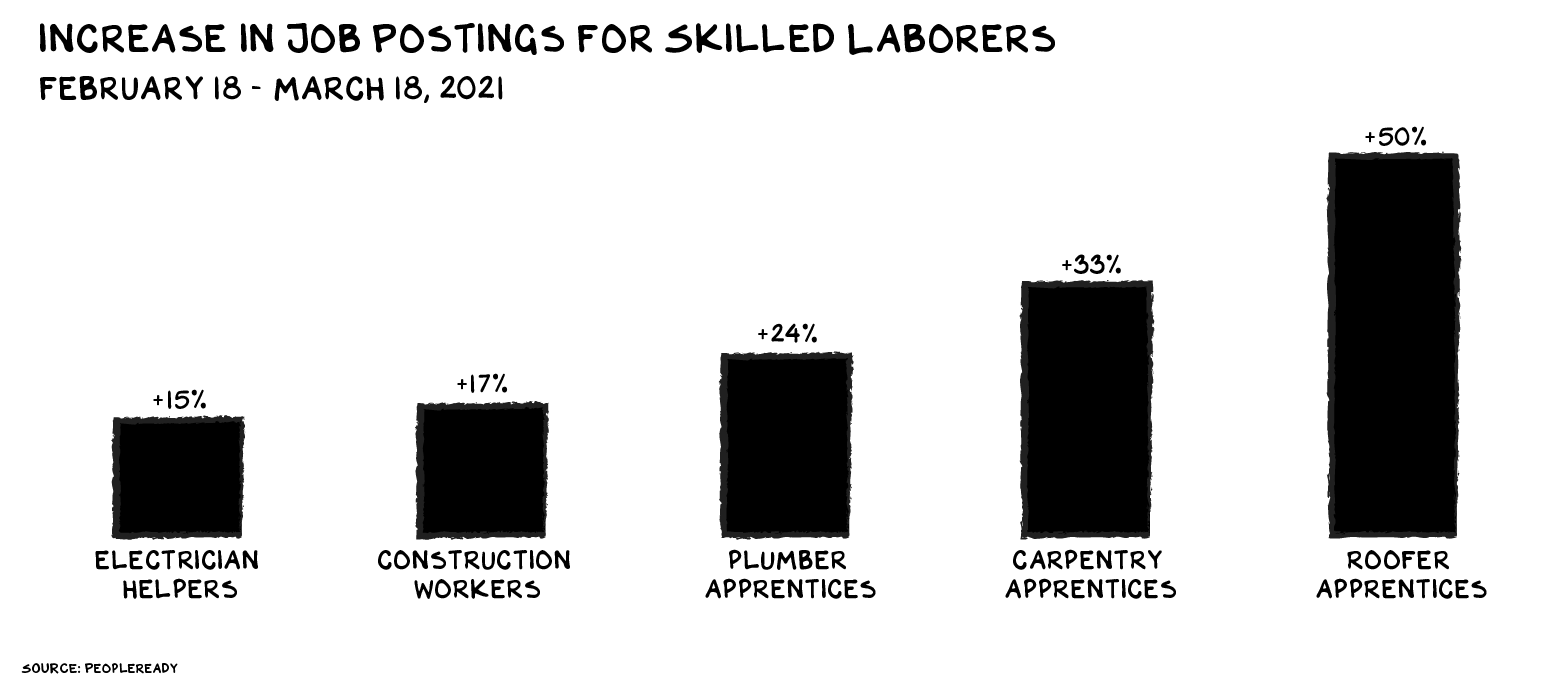
This is bad news for schools without the global brand equity of the elites. They are being unbundled, piece by piece, just as newspapers were dissected (classifieds, movie listings, news, sports) and sold for parts to benign billionaires. Today, we have a handful of elite newspapers that are thriving, a wasteland of dead/dying second-tier papers, and a roiling maelstrom of tech-enabled news sources serving the mass market. Since 2004, two thousand newspapers have shuttered. It could be as bloody among universities.
Break It All
As bad as this looks for America’s second-tier, four-year colleges, it may be great news for America. This unbundling presents the opportunity to break the wheel of four-year college dominance over the American Dream.
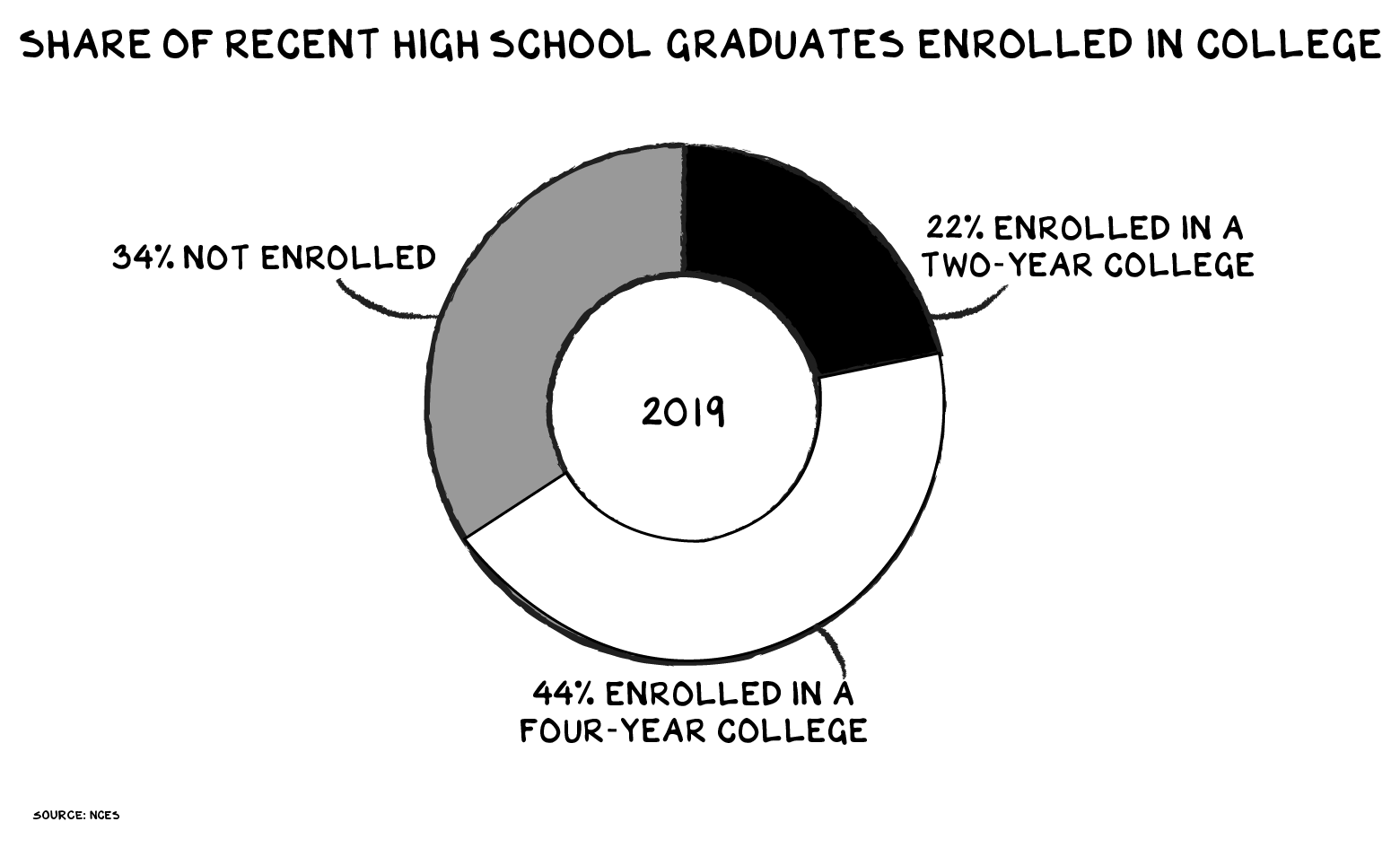
That dream itself is at risk. Wealth is being hoarded by the old, which has left young people adrift and unattached. We need to find ways to invest in the non-college bound, and create on-ramps into the corporate economy without the ritual of a $200,000 college education.
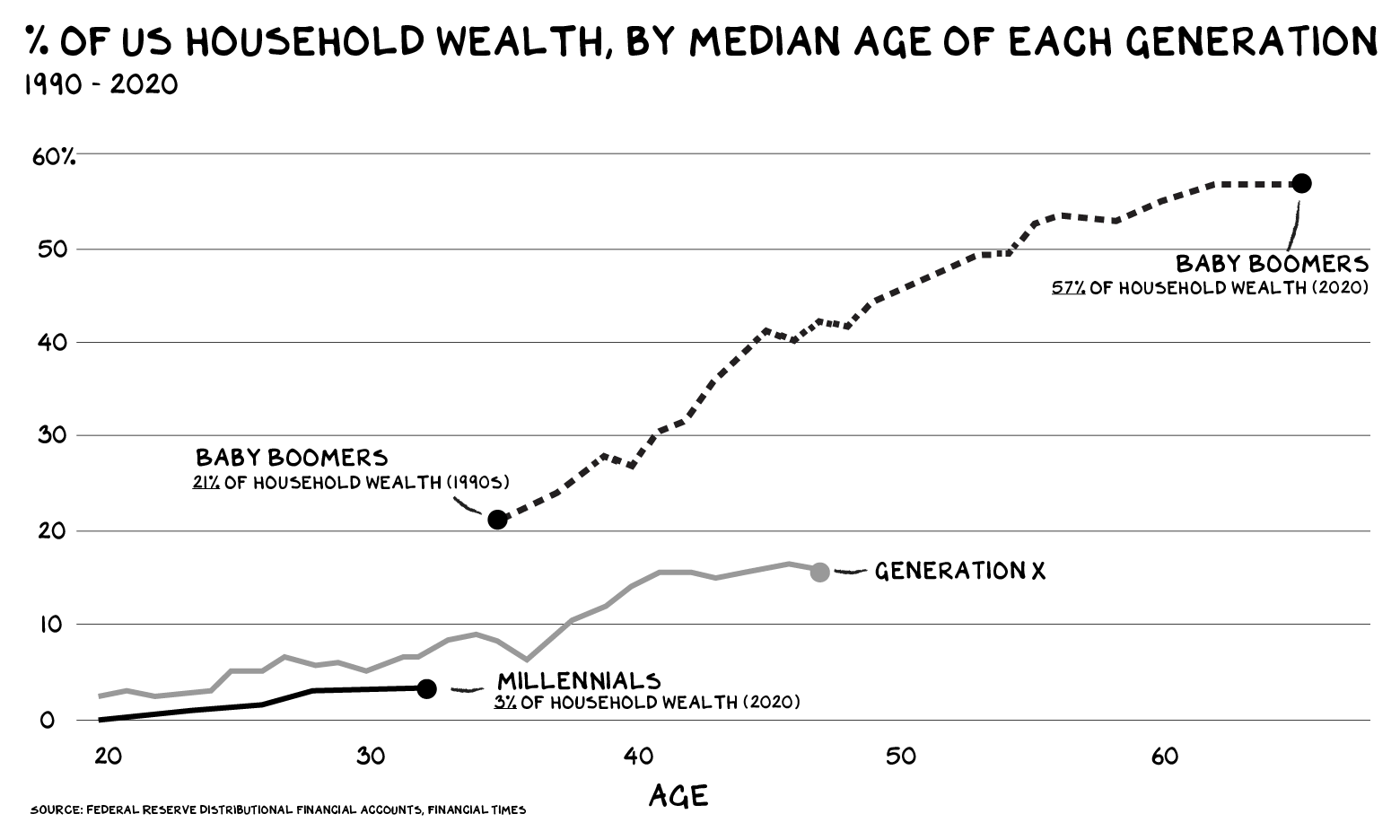
These programs could also liberate education from its ageism. College is the most ageist sector in the U.S., a huge industry set up to serve 18-24 year olds. Even graduate schools are designed to appeal to twenty-somethings. Yet our innovation economy means people will need new skills at every phase of life.
One lesson can be taken from universities, though. Just as they dropped the requirement of standardized tests, and registered enormous progress around diversity and inclusion, America can register the same unlock if U.S. corporations broaden the on-ramp to a better life by dropping their fetishization of the college degree.
Life is so rich,
P.S. A hero of mine joined me on the Prof G Pod this week — Senator Al Franken. Franken discusses the state of play regarding our political ecosystem and how Americans are separated into two different information universes. He also shares how he got his start in comedy, as one of the original seven writers at Saturday Night Live.



